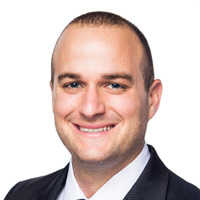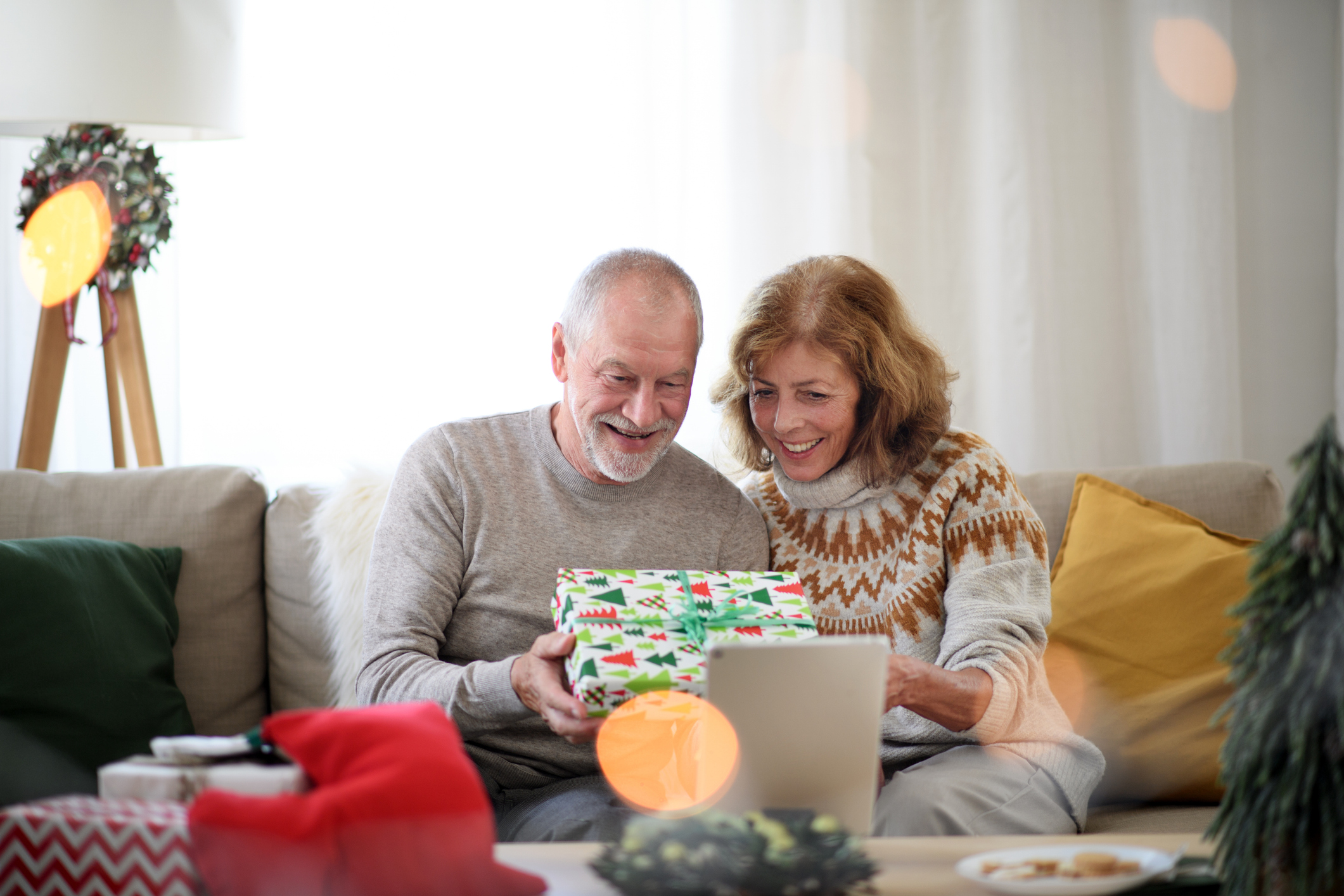Retirement Requires a Shift in Thinking
The risk-reward equation changes when you retire. It's no longer about growing your wealth: It's about protecting what you've got. So get ready to flip your mental switch from accumulation mode to preservation.

For most of your investing life, you’ve probably been encouraged to build a portfolio that balances risk and return — achieving the highest returns possible based on your personal tolerance for risk.
For most people, that means living with a certain amount of volatility in exchange for growing a comfortable nest egg for their retirement years. You can lose money taking on too much risk, of course, but you won't gain much ground being too risk-averse. So, a larger investment in the stock market (60%, 70% or more) would be a must for those looking to help grow their wealth over the long term.
In retirement, though, things are different, and a shift in thinking is required.
From just $107.88 $24.99 for Kiplinger Personal Finance
Be a smarter, better informed investor.

Sign up for Kiplinger’s Free Newsletters
Profit and prosper with the best of expert advice on investing, taxes, retirement, personal finance and more - straight to your e-mail.
Profit and prosper with the best of expert advice - straight to your e-mail.
The goal for most people should change as retirement nears — from growing their nest egg to helping to protect their savings and ensuring the money they’ve accumulated can provide them with enough income to last 20 to 30 years or more.
That means a shift in mindset and a transition in strategies.
The problem is, the financial industry has done such a good job of pushing accumulation at (almost) any cost, it can be tough for some to switch their focus to the next stages of investing: preservation and distribution.
Recently, for example, we put together a retirement plan for a potential client who had saved a hefty chunk of money — more than $3 million. We included an income plan — using a bucketing strategy — that laid out where he would get his money in retirement.
With bucketing, we typically look at three time frames, which could be labeled “now,” “soon” and “later.”
The “now” bucket is designed to cover living expenses and larger emergency expenses in the first years of retirement. The “soon” bucket holds money you may need to access a few years down the road. And both buckets are built to withstand a market downturn early in retirement — a time when “sequence of returns risk” can devastate a portfolio.
In this case, the first bucket, the “now” bucket, was set up with cash equivalents and fixed-income investments. The second, “soon,” bucket included equities (about 50%). The third, “later,” bucket had a higher percentage of equities, designed for long-term growth and legacy planning.
When presented with the potential plan, the client felt that we had put too much into fixed income, especially at the beginning of the plan. The client thought more growth opportunity was needed and wanted to take more risk. So, rather than focusing on how to generate income from the portfolio, the client was still focusing on trying to achieve potential higher rates of return.
We had covered the biggest concerns the client had come to us with: How long the money would last, and where exactly to pull income from. But in the end, the client focused more on maximizing the rate of return.
Those are two different goals.
I can’t blame the investor, who had been trained for 30 years to think about risk and reward, account values and returns.
But I do hope, as an industry, we can help people understand that:
- Cash and fixed-income investments can play a critical role in weathering economic storms and can help protect what individuals have in retirement.
- Each investment has valuable features people can use to their advantage. But needs are different in retirement, and a person’s plan should reflect that.
- Even if they can handle a more aggressive investing strategy, why risk it if they don’t have to?
In retirement, it’s important to think of your savings as income rather than a lump sum. It’s not all about achieving maximum return on investment anymore; it’s about how you can get the maximum return from your portfolio and into your pocket.
Instead of sticking with a collection of random investments or going with a cookie-cutter asset allocation, talk with your adviser about ways to help build a strategic plan for how you’re going to distribute your assets to yourself.
Kim Franke-Folstad contributed to this article.
Fee-based financial planning and investment advisory services are offered by Imber Financial Group LLC, a Registered Investment Advisory Firm, and Capital Asset Advisory Services LLC, an SEC-Registered Investment Adviser (Registration does not imply a certain level of skill or training). Insurance products and services are offered through Imber Wealth Advisors Inc. Imber Financial Group LLC and Imber Wealth Advisors Inc. are affiliated companies. Investing involves risk, including the potential loss of principal.
The appearances in Kiplinger were obtained through a PR program. The columnist received assistance from a public relations firm in preparing this piece for submission to Kiplinger.com. Kiplinger was not compensated in any way.
Profit and prosper with the best of Kiplinger's advice on investing, taxes, retirement, personal finance and much more. Delivered daily. Enter your email in the box and click Sign Me Up.

Jon Imber is the president and owner of Imber Wealth Advisors. A fiduciary adviser, he has passed the Series 65 exam and holds a life insurance license in Michigan. He's a member of the Financial Planning Association and a Registered Financial Consultant (RFC®). He earned his bachelor's degree in marketing and business administration from Northwood University.
-
 Investment Expert: Is Your Retirement Portfolio Too Late to the Profit Party?
Investment Expert: Is Your Retirement Portfolio Too Late to the Profit Party?If you're following the usual retirement investment model, you could be missing out on a potential profit period that companies see in the run-up to their IPOs.
-
 Losing Your Job? A Financial Planner's 6 Steps to Survive and Thrive
Losing Your Job? A Financial Planner's 6 Steps to Survive and ThriveWhether pink slips are just rumors at your company or layoffs have already landed, there are things you can do today to make the best of a tough situation.
-
 Oil Prices vs Investor Returns: It's What's Beneath the Surface That Counts
Oil Prices vs Investor Returns: It's What's Beneath the Surface That CountsEngineering, geology and operating discipline can determine the success of oil and gas projects as much as the cost per barrel.
-
 Here's What Being in the 2% Club Means for Your Retirement
Here's What Being in the 2% Club Means for Your RetirementOnly 2% of the population has both a pension and more than $1 million saved. This is a great place to be, but also requires advanced tax planning.
-
 Insurance Buyer Beware: States Are Lowering the Bar for Agents and Brokers
Insurance Buyer Beware: States Are Lowering the Bar for Agents and BrokersA new California law removes 20 hours of required education before an aspiring agent can take tests to get licensed. They can then get licensed in other states.
-
 Still Working While Receiving Social Security? A Financial Adviser's Guide to the Earnings Test
Still Working While Receiving Social Security? A Financial Adviser's Guide to the Earnings TestIf you haven't reached your full retirement age yet, your Social Security check could take a hit, depending on how much you earn.
-
 I'm an Attorney and a CPA: Charitable Giving Just Got a Little Easier, But Also a Little Harder
I'm an Attorney and a CPA: Charitable Giving Just Got a Little Easier, But Also a Little HarderThe OBBB shakes up charitable deductions with a little help for non-itemizers and a new challenge for itemizers this holiday season.
-
 This HECM-QLAC Power Move Can Unlock Guaranteed Retirement Income
This HECM-QLAC Power Move Can Unlock Guaranteed Retirement IncomeCombining a qualified longevity annuity contract (QLAC) with a home equity conversion mortgage (HECM) can significantly boost your retirement income and more.


